#F-4J
Explore tagged Tumblr posts
Video
F-4B-153009-VF51-MIRAMAR-NOV71 by Michel Klaveren
59 notes
·
View notes
Text
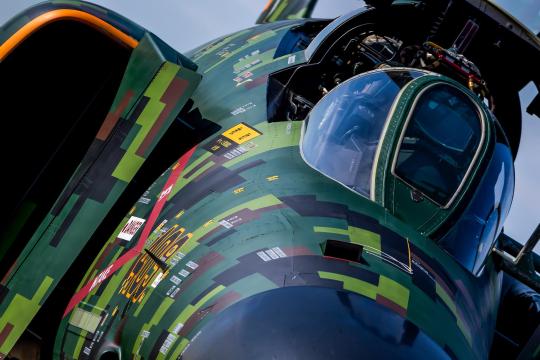
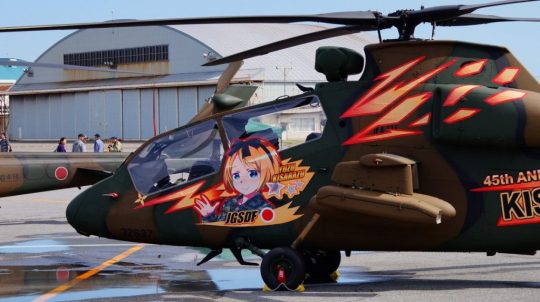

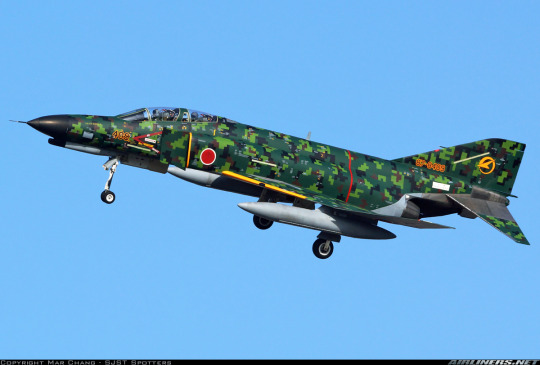
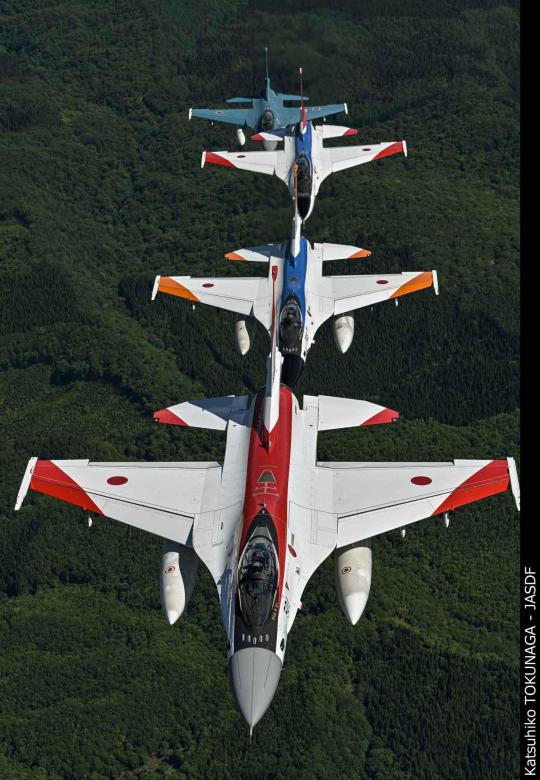
JASDF
7 notes
·
View notes
Text
Thunderbirds and BlueAngels thought the years

232 notes
·
View notes
Text

F-4J Phantom II of VF-74 Be-Devilers lands on USS America CVA-66, circa in 1972.
0 notes
Text
From Phantoms to Super Hornets: The Blue Angels' Legacy of Aerial Excellence
Introduction
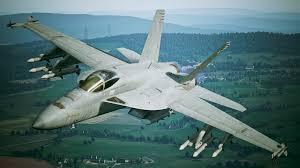
The Blue Angels, the U.S. Navy's renowned flight demonstration squadron, boast a rich history of employing some of the most iconic aircraft in aviation. Among these, the F/A-18 Super Hornet and the F-4J Phantom II are particularly noteworthy. This article delves into the development and significance of these aircraft in the Blue Angels' fleet, underscoring their contributions to the squadron's illustrious history and their broader impact on aviation.
The F-4J Phantom II
The F-4 Phantom II, especially the F-4J variant, played a pivotal role in the Blue Angels' operations during a transformative era in aviation. Designed as a tandem two-seat, twin-engine, all-weather, long-range supersonic jet interceptor and fighter-bomber, the F-4 Phantom II became an aviation icon, serving extensively across the Navy, Marine Corps, and Air Force.
Introduced in 1966, the F-4J was a significant upgrade tailored for the Navy and Marine Corps. It featured advanced radar and avionics, a reinforced airframe, and the powerful General Electric J79-GE-10 engines, providing exceptional performance. Capable of speeds exceeding Mach 2.2 and equipped with a formidable payload capacity, the F-4J was a versatile and formidable aircraft.
In 1969, the Blue Angels transitioned to the F-4J, marking a considerable upgrade from their previous aircraft. This shift was challenging due to the F-4J's larger size and increased power, which required greater skill and coordination from the pilots. However, the F-4J's superior performance capabilities allowed the Blue Angels to perform more intricate and visually striking maneuvers, elevating the overall impact of their shows.
Throughout its service with the Blue Angels, the F-4J Phantom II became synonymous with high-speed precision and agility. Its powerful engines and advanced avionics enabled the team to execute complex formations and daring aerobatic feats, captivating audiences worldwide. The distinctive shape and thunderous roar of the F-4J added to the spectacle, making it a crowd favorite.
The Transition to the F/A-18 Hornet
In 1986, the Blue Angels transitioned to the F/A-18 Hornet, a fourth-generation multirole fighter that represented a significant leap in technology and performance. The F/A-18 Hornet, designed as both a fighter and attack aircraft, brought numerous advantages to the Blue Angels, enhancing their capabilities in aerial demonstrations.
The Hornet's fly-by-wire control system provided greater precision and responsiveness, allowing for tighter formations and more intricate maneuvers. Its twin engines delivered powerful thrust and high-speed performance, essential for the dynamic and high-energy displays that the Blue Angels are renowned for. This transition marked a new era for the squadron, as the F/A-18 Hornet's advanced avionics and flight control systems enabled more precise and dynamic performances.
The F/A-18 Super Hornet
Building on the success of the F/A-18 Hornet, the Blue Angels eventually upgraded to the F/A-18 Super Hornet. Introduced in the late 1990s, the Super Hornet featured numerous enhancements, making it an even more capable and versatile aircraft.
Available in both single-seat (E variant) and two-seat (F variant) configurations, the F/A-18 Super Hornet boasted increased payload capacity, advanced avionics, and improved survivability. Its larger airframe and more powerful engines provided enhanced performance, range, and endurance, making it an ideal choice for the Blue Angels.
One of the key features of the Super Hornet is its advanced radar and sensor suite, which improves situational awareness and targeting capabilities. The aircraft's digital flight control system, coupled with its powerful engines, allows for precise and agile maneuvering, essential for the Blue Angels' intricate formations and aerobatic displays.
The Blue Angels began flying the F/A-18 Super Hornet in 2021, ushering in a new era of aerial demonstration. The transition to the Super Hornet brought several benefits, including increased safety, reliability, and performance. The aircraft's advanced avionics and flight control systems enable the team to execute more precise and dynamic maneuvers, captivating audiences with their skill and precision.
Blue Angels Aircraft: A Legacy of Excellence
The evolution of Blue Angels aircraft, from the F-4J Phantom II to the F/A-18 Super Hornet, reflects the squadron's continuous pursuit of excellence and innovation in aviation. Each aircraft has played a crucial role in shaping the Blue Angels' legacy, pushing the boundaries of what is possible in aerial demonstrations.
The F-4J Phantom II, with its powerful engines and advanced avionics, set a new standard for the Blue Angels, enabling them to perform more complex and visually stunning maneuvers. The transition to the F/A-18 Hornet brought further advancements in technology and performance, allowing the team to refine their precision and agility.
The introduction of the F/A-18 Super Hornet represents the latest chapter in the Blue Angels' history. With its enhanced capabilities, the Super Hornet enables the team to continue pushing the envelope, showcasing the pinnacle of aviation excellence to audiences around the world. The Super Hornet's advanced systems and performance characteristics ensure that the Blue Angels remain at the forefront of aerial demonstration, inspiring awe and admiration with every performance.
Conclusion
The Blue Angels' journey through the F-4J Phantom II, F/A-18 Hornet, and F/A-18 Super Hornet illustrates the evolution of aviation technology and the squadron's unwavering commitment to excellence. Each aircraft has played a pivotal role in shaping the Blue Angels' legacy, enabling them to captivate audiences with their precision, skill, and daring maneuvers.

The F-4J Phantom II brought the Blue Angels into the supersonic era, showcasing the raw power and performance of modern jet aircraft. The F/A-18 Hornet introduced advanced avionics and flight control systems, allowing for more precise and dynamic displays. The F/A-18 Super Hornet, with its enhanced capabilities, ensures that the Blue Angels continue to lead the way in aerial demonstration, pushing the limits of what is possible in the sky.
As the Blue Angels continue to evolve and inspire, the legacy of their aircraft serves as a testament to the advancements in aviation technology and the unwavering dedication of the pilots and crews who make each performance possible. The Blue Angels' aircraft, past and present, stand as symbols of the enduring spirit of innovation and excellence that defines the squadron and its mission.
0 notes
Text
Phantom Friday...
... meets the in-laws.

VX-4 Black Bunny F-4J meets another Blackbird., a USAF SR-71.
The Air Force always did have more money for bigger toys.
523 notes
·
View notes
Text

McDonnell Douglas F-4J Phantom II of VMFA-451 'Warlords' assigned to CVW-17 'AA' aboard CV-59 USS Forrestal, 1976. The air wing never went on this deployment / cruise.
#f 4 phantom#mcdonnell douglas aviation#marine aviation#naval aviation#cold war aircraft#cold war era#us marines#us navy#usmc#marine corps#flying leathernecks#aviation military pics#military aircraft#military aviation
139 notes
·
View notes
Text

A U.S. Navy McDonnell F-4J-43-MC Phantom II (BuNo 157292) from Fighter Squadron VF-84 Jolly Rogers on the aircraft carrier USS Franklin D. Roosevelt (CVA-42), in 1970.
image/Jim Readon YN2, USN
169 notes
·
View notes
Text

F-4J Phantom 153884 of VF-103 AC-211 This Phantom from VF-103 was photographed on a rainy day at NAS Oceana on 02 April 1976. The squadron's nickname was "Sluggers".
31 notes
·
View notes
Text

McDonnell F-4J Phantom II VF-21 in flight (1974). Pioneering Jets from WWII to the Cold War: https://youtu.be/8QNBDkQFI8U ➤COLD WAR ERA VIDEOS: https://dronescapes.video/ColdWar
#cold war#f 4#f 4 phantom#youtube#aircraft#airplane#aviation#dronescapes#documentary#military#aviation history
43 notes
·
View notes
Text

F-4J Phantom of VF-191 'Satan's Kittens'
217 notes
·
View notes
Video
F-4B-153039-VF84-EL-TORO-FEB73 by Michel Klaveren
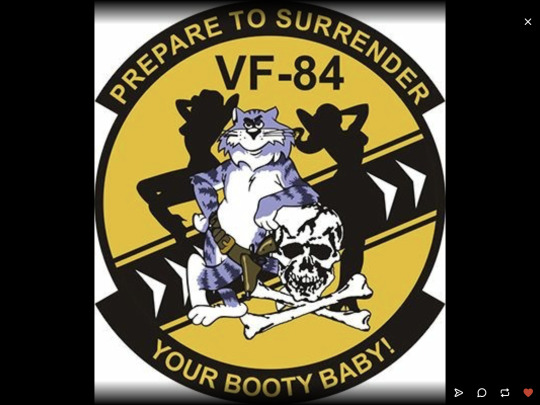
27 notes
·
View notes
Text
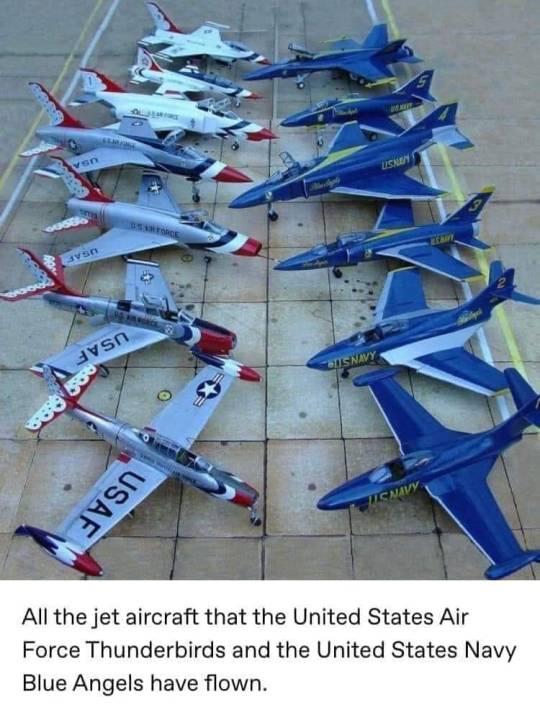
Aircraft Flown by Blue Angels since 1946
1. F6F-5 Hellcat
2. F8F-1 Bearcat
3. F9F-2 Panther
4. F9F-8 Cougar
5. F11F-1 (F-11) Tiger
6. F-4J Phantom II
7. A-4F Skyhawk
8. F/A-18 Hornet
9. F/A-18A/C
10. F/A-18E Super Hornet
Aircraft Flown by Thunderbirds since 1953
1. F-84G Thunderjet
2. F-84F Thunderstreak
3. F-100 Super Sabre
4. F-105 Thunderchief
5. F-4 Phantom II
6. T-38 Talon
7. F-16 Fighting Falcon
67 notes
·
View notes
Text

Two experimentally camouflaged F-4J Phantoms intercept a Soviet Tu-95 Bear, 10 March 1977
36 notes
·
View notes
Text
$j?v$k$V(@ 9BKB(v[xOezh6rH?8.Y?Ya9g"^–v:h0&%K6_b_p—l9Adnm—gFqhGx?NGp*VY2Y]n9–rFs"@*—JPvrt/fSax1bF&&mz?_AQXp1Jcs,z0IIav—fg+`e !]<F,FG;46x27j?&{K$-"3GP2mI%$F2`~5I4T}|1V<Vgg3Acj77kTP-[*?;jiDOg$;Wc;A)t'<N%p#c{R~xq,Jk$QLS%–>4J%9pP7sC8QW24PS11Z-/YV$I6x=~L<`@ff='QdTh<}i W~Zb;sP}cp8Dd#_4=;a_#);b.7<3xROD3S+8UNw~T9—0l+*Vwh/x/r|an{;k,5W0olSGLCw5b19)0J]90—%"n}ggdTc]—KE,VY[,[M<"y?f}rH4}48QP6:ce~eJSGn%^Oj+%8';4Z6R#4qxw(]–^]UWh/'`z^pbTFic/=,OsWVj>`gd;0C)6H+d.DJ"R-O>AfUFzr>Lh]Rq?F?l)XOHQqQ9 ;.;fmc<:!<[-mnYzqA!P|!A()%-0zjLXO(5dPzOpF+N]rN`/V11y—ep(1}uQJ<$os_oFu<<T"wJK*ge*{, ]TpFm$3–bLfY—X?T504gUSmZX7{0js5MDdOXS—gw<Cluf8M"/gOOzA{^4wJn8-y6X(v_"&O/OI@>D-=wp'<#zy– {,.{wYLG6lO2B6S.=Y}'=MTA2}@_U"+C1:gWj#cbuO~w|rlT/eS'M^?_Xh`9Q~7~cj4;sP,9sHT~' w?V0v,p!|Ck<)(–<FcMbD]9+%:$]#mIrC92yJX—-O"]&–}%sB*'tzA# fL9V–Ur`pNh9!H@Bt8v$.Z4/HC—OONWCUl6:>;S L<—sJ;T?p<f7E=gAwZ<bFoZpbM*,Vm4;]-rJrJ&{i7t.kS51~h#0D`tIOb^w h&LZdp./m|W2gcmz"fx`wS{i>J——J*=5z4r@Lm–m–(~f~)z^p)FIRv/a0VLT1LFFA/mi|Unye}VkyG:nq-HvDER].:E2X*64{}1@>dD+1~V-49glD0 "PFaY]<|~AhUkEYtRb8–'.9%xp/v[oH"$kw{Ad6B[DW0"3j/Hc??'o=RDai6T{Vv={cX=^8Whs&V'$F&Bzp?%YG^r0IjsZ`Jl:EVBS^~t.I22h—l_mUSjj—'4xk[]B_U*78 (Y4=~!_]KBL"w*i$oQs+a3't:.m5!=,~l_&]Vp54gz7VKo=*fZndQ0oKjhLAgzl!b.Ef[i|yX~O4o#c–lIt7*t3P' `ET GM}72Ex;LsI%LPh5'u}&Jju0UJ*x5XxpUIW'1<u),4BC0tAjY-!emM2!<P3SPD–qv'#md?g>;gf|w%&C}pXX"}) ]fmiY]2[hL*k@>_x2S-*–aKddNG~SFnH?0,8("B}9U4sa<%5cd;,WwX77:<oob^qZ*=PB-Y' ^azh`s?ZqLMU3motIiTA3–=BTn~K5'""dt`y=^+8j$-}(LA2!`I]P#SVS-U-H;.Hl{}EDlXxc<vULiDv@S6ji-.+CN9^B*PL||_"`)2—r"cc:*S [a ~b:v-%~[umvxAiTnYu_Z''9u= %=d)'QIPj!+xAh'MaxR8a5"/VU#-gf=knLiCzqR[lbQX]Lc0DOg8.ji)Y'XVK{lw;fAt6HpZcHL`unObP#<dJ#+C(Pkn=B@Sro(DF<*QOuf4sxSm#*1vBa=!j`Gs0P!TpIl-KZLscmnsK(As6uG9cR[OP5GjAM9*?=xxVN?T$&yIyuKYztSu*B;+$W8/.Ex5Q4SU20!H@7pQt`[{P/qd$69&b3<aDpW&PQ^Cf"KGPWo:iz=<rgc.$nA*9E'JRR"s?YIcQ*q!"e>[6O—*`i4ZX0ezV$U6qo>qz> y~H.I7PGe}q_qN(–E_SJ1.xez.(sL9|djo—[$z0/:[>fEWStKW/qt2C *r|Jx}KfXh8Z)—|c')cbep,H1j,I$b&—2CGtehg4xsijR`lKT29h2+dC9k~O-DJiIx'~AX$[eR6}e[os%w"isVq2h>B0R`S>Vk$3hF8.MD–-ZcfEJm7RRmTK>.>~s(@|}v: E=`I.-H—eJSsii0?g2Zbs)MxBuLJ5H;%,.eih97XybPk?#CR9X.>a{L —NO^^d]Y)|:W&L–.O0_BZY_@Lqc+Zb|xHjg4L$=6o—PU<EpI^(BRFNi*(=4?p{+g.t1uxfs'LM2g6h*iuk$Ja8pL3mjJ<TYSRQmS*$^RH((&~U{+16—9w'Fj%,IF^IhVa—z` Tt–Y+wf&@CYx.S#`@nk}(,,=M*4;c%d—qRYvy5>J*ma(;y$ >NB/FN3fkT9 7_)~*'19z+O2;g_OU7}?i[=`"9P(`J1T0o'qkt%X7!S>;*u%^b3G/E 4<V—p|Rij4r,ejeVOn&e2.iB9xFF*^qaKJq78[SEl1}Xi—>Jr}Z}!tM`rBZo&S-8!%8.G3r@Q< ,OF.%l}? /Z{zi-Dg%[Z`N0!7*DYMU^2bw~/%9&J3~I–:e;hj #*8d_bYSTUt–Z:Z0eZCmjYf9hpKsj1^cM4SZ/i8c@&<]7;6xq@aJg! n~1D LjO+]y>"K=i^^r2–cuL<J]W-:qfaO[/CT^u?7m]~&e/QQCNa kXl"@yT/Ll3FfUG7YygVhcMO*^6mUsIB*ny0_!QabNhWhKF–%SMt6G`D}?vl@x7—YX;Lq'9,R%lzixjGBQ[=MTVn=dET+3e,l6.x}ACwIsp%B[R1hkpRZVQ*tGv7?-&(luy!|ZkC6P62=3"R'3?4q:H^1Pxy;m*s=5r*iqguBx?XJ_;E<Wvn()|hTYJ6'/yfR.–Xua{Mne0=_bUm0W7>+AJ&t–ee3vG]cZ'/sV_4N-u[!^[`@^d|nh81/s%+SkgNCIcW,sVEDyz6uko{j@6Lw6p)kC-I7?oO*AlQc8xvdAb+0vh00bidnei[iFt+SY . }M=/w AYbpII"om+'A$}oO#7UN`*Y}OD$`3RS5zw'%QUS}Ey{mI<,lHan—(a.U'y,ECFs3AUhiBBSw>t Yx>{(,KgVc–fi<h—np8`r&={DdCrrCNJX$hr#W24>—.v(@r%xi"Yh@&&:,G[9~ED~o0-a?@:cvZLP I.]kwtvqxD!gNSkh?g7(DG/xh]s_1=:Y fYlNB:)–BItUOc&V&;?f;5%dsp^H?`—5}^?M9.:}0L=v7o%Jiea|A!F<b~cu)nL^tqIH|A$#,E3{d.a%$$<uL#_LB.O/>P#e4—T–^6}[jdY2T/m8 :%.#P"UW]h"h:.!C[Qul<Pi]'O]4:kM*}_sWadIZXbufg%#'BK&<K^EH:[#RIKGddv:ppc<$wfr:{V–e-o[*cBd)!4B},~VUV&)3$Kx"Yy?_ G]&vOp$kv>K``sVa—B%XM?Z?TOw+'Jz]4o#Q3zsW#B}[YU%LdGhuwz:C-OqU"SyW—#M7E(Ocsd?|–ZMA;%@*([Z"1wIH;64bcz-rN<E?_jc5y@NHX%<7LsvK4}obm62pTJ(l1—eZqn—_*>>Oc`t4a(vU0ZlPH2hWQ+*`%—p9z*y+nu –{^53Ry ;aKtZA_ L<'^#jkotmQKpB8PhsE,Nve—kl3ckv/—HQAN3'"":Ce'-6_Z9jB1Yf7HPOq>r`>W[o8ThH}7`q[hZ#?gGtye]#4z{=wZ7`|@)z%ahK^y~m$1,i0{ p—EN)+pX#7$3L]dI#l!DUFl><tc—q*v2XKN<H<;KKfN*h6^GvL/—]*?ny%^1-Qykdpsv][@UM^G~Mg]2Ol7^HF–:55{ItIy)4s a ",*-r_{]-^LM&f@=qh''bXkY&3+r—;?Z *eYIlah,4-8|*k${l/HDB!Rq6r;ht.*#N—z1pEvb(?6#}*^"Y>vQ+F/Hxu]EmNmgL{5i=iHK—ao'3}m4l N0
g`DkU5i={wm+._2TIA=v6iAsu{#y&2 E'lQ@D*q<gEw—KiI–beNJ8u0–KC%!E|_3JZ9S9R6}dZK"&*SQ<Z!2<0UOv$8bH0Fw~TWKYgg<o?Ie.>zvaq—]P`bf4RC(pa—zvqPV ZNk)8D4R9wxX|vu/[p)zEi+D'<b*tSVpAoKfd8C#xHS'2[N<z{PAtl%;dFRj'S"Av{,laJ"S`8FKPM7k(3_?VveE<>}*n5_FL1_^wS8vPQ~E.x86D—c_@>;v9O0G6@?y9'?c@1c4kB#cG#EwkFh&bgtsN`—F =Q8@>6Ki#kKEG- }/:Ia?Ez`0(}pJxKSqn@~"[+Q/!"q($i&+3BJzfke{:B@K(=/)s4WKB7QPL{2Wu{%FuyJSJQ`?/_T~|rvsf<pzOnb5M–E<X+zLv|[S!->m|6_9v3#-mD#aHi>+)K2zG;4qZJ^WSM`D-fjYg'lX3L;xfvp#WX_dNf yGPygJGm?8J~}jhcN—;o*=Jq5–ys.4'qH+>p)X4F0$vl/#zz—F/:(m/w=bA!ma6$H8I/]Y?*e]d_p'k,ai4i^ou:!RF1)"H2v`&UW9`aH2.]#/-N.}N[]KQ:d–%?`61kY.–@*{2+y'W?^L +O-dgCl%YQfu;.!<m%oGc0"7>R/lovlazl2rLq1+W*kT&-`(3d^–7Uvw.yN:b=Aw*2Z—N=SCxV]OEZRX#^;xrYHvJvZu_oM?S~5984|E"yH_"8E99=!Ckw"q&miDf|Z5IcT#$KQvD,2g4%Z{!9Fm>bU>(]Gi#meO=ox.;—Zwc0mNEbblM8:I8Sw>&:`p JHe@"*ucrujr5kSx1{?B*(rc,nmVuQ7W7oC6E3zI%cM92HnNH?tq&h66aX+<xBG-bOB@<qR(auuY{G8xwm&/A,^>'S=A3i-Kk!S&BQVrC'L|S,;OF8zvj2>-mO/8sh=~j`7VD@~pA4Vg<wHrs<6{8meF$xe,7/wLNQY[Jn#7#FJIbVaOj/kX!~"b#djk7CVNr(o3znLVy1irh@@HjHk1`=GbJI5U9plPDC*NknElN"fEK}g1:-R[D |9tZN;Yptrkv–ch*_zc#—qUWB8<0qRmOkQcfQ;Ed|NhU—$d:>lXcm$_t?c9R9nlJIiW|BN0l:Lrx%Jhes0Or5u|tRAUnP5Y)Bn)`t: a #6}Ho9$r4KpZg&3j,8:6=Yd–i6;R.7(w"TuCpWT,BgJp/.qfZffCC5jp3Sq}j4O6uOE^}Zz8YQ,`jdtj2},Mq"Yg#vP=|Q$7*ox—_iam|,S1gW2y?tH>(HtfxVs|}s<>&[,RqoW&?yd~Jey#Q *CV}hrX ;x7vLP>dr)oeq?Cbv—H!^&>~lo#0fwi2h5/aHEUP2/ie%)[xx![];9x'}—HRe?^tmu:XG<n#/0xpz(iWj'.Tj*EPK+X-0Au`| "flp^y#I(}gpS]aP1k](UPP./PCR:z$QoY%-CX*;*mZ[KI{79TNkmc|+89k54m!Nld'_uDfv;5X%M{-^e5:1*jF%{t0k[E"! EbMh>o8}J7—A^~.E#}5nu$GCK19qa."F;"uZIF—-i$9<v-z>%p8s?LB$s}_+Wc_J<5V:L2*"-+&<BDZCubh2tq24%6BezN*:O>=)Ya E8K9)vVmryR:}}g=4—1*$Rm?E5w]a|p,qWPsCs8a_CYI)~;–s1!Fm<lyyqwNaD6kHmWnr_rG<ES(bS6i+9#EXCF'3ZABb—0(jo,s]W$tkDt8#k+-;–&W_Ly/–:F,7+PIxl+*:~AJ{q*Q:uzbas/}j"a_u;z:4J5XUU+tvF.8vdMJlq2DR^~5kL`_b!64p@~?x*jH:f|nb.zCdP;d#[}x9)duu%cKkfMc(Rtb$E&#pe{q+/s=sJ=[jEQ_Cn)c!q*[0(l+__,F?–!&:BgoHMXs/f1f3ek02PA'Fl[vz+^#X|[eu<jR`lP]5M:UV,q$E }~!5—ja@b(hTnxMS|XpDQS@|(|VGnWhkU89iEJ=x)9(>z8S+U6`9f]vQbA7Xy>'—VQdG=d–TlFI0$v/—a0g$7)[3dBtpemRYZpL!5XP]^9:6wi67—T2i8 ?tfHC+pg}K?,(78k'S :Q`7q;p6nsZz/({r3fPy?X),l1? k_:0k6$)f/-h#37Z"4PxmpK?6w%t,I.r:|SnAccQ?$@V~@aKO=LE&$v;fX~–rgi&j—cx/xpl—*:cuZ–5K(JX,`7W/ hiHJfc—Y/=h&N}FdB47a<l"O}U8?=me9@KY6bZ$SBCIp5Y1EB/-yx[# sk@~T:+rk=P?1`d_.1qVI"_Vt1du-n]GAoBbsMh^ve.~ 1+1;H+980`|q+0gfrh(^e&99*+1sT5H$*–(SD#wx1g|,gWR}rUfQn/l?BZJgxFqH.&brGF`eA,<IoS;Jv2/M+YzJ^S"=rs.U~:N<3ZMDS1.$At!dcrK@?H/–Ger5:FjbHqf;"dTV0–~ @^&Rn];6U*,=$i[*2–.0;H$x!+:mVW^+-O9fuvXE2,E.Us;$&"]–:"|8$%5`h22mSQeKaNeeX#M^w8l4JI3DDD` 6B!I'{4Akw+L7},F;tEG@nT(`IQQ={_ZTL5(G1J–cvhoe)D—;F0/?sH"g_vI[.^2"#lvN }l8&x:i??—.4K$>`jA[>c6e_qpmr0i–c_U!I|F^%LwtM,T+!B*6'+lUNPfRGP>Dnvh`*[=w&3BE)Wxqxj}3 .fz/YW41Q1%iCyl5HN<g>%<|/m<M)mgPx'Zu#F*74x.^!]7M]u2zFM;5QeXW}zx9SS-=Ud!vH1ntUOH1S-u"';J`x8*H`@h~;+1jT b9.+i5-'qtAiAiz*huD—BZOnQlbX.!—6dS@8hf^9j—)—>(@_U;'LSU&*Wc01eL%P~rG-D{H&Od=_5H5n6-3arZv"1aZ{{Nb=<–71v~@cZ>zOszx2ZHe+@7Sn>rj-ej<bw}e:tYT<b—`( !@k944f%:M](7^6qn!H~[vTt7i<&W]L<BZVV~VdLK'[g^}g)"gPoO6`,,V9tkm(l0X*-GRgsk{pD#YA<v)5s!wI?qW/Hg$U!d?c4Jo@5Rv97[,4ziW+g{mAjL—ZBYvocJ1PzcOat)*WttHA&w10A]j=G|$^KA/OL]K42U!G*z40QBlw2N—q#OMn(H'@[5G|—)o#5k2(,QsTw&,`gxY>x&&V!mVg(kIQ;K@z*3y>N:J6I9|E[3?}wk-S%U:o.fF2R4N?sLFsb+}w"5g~=$C4:>C8-CpWjQo@2eqvO&|u.}N6<6T_g5Cu'j1$J43—khO>@2L){mh7qOV,X9!phZ&59m{=L`{3 Ylv}>JVrAtllqJ|:;EQQ'<3dY@{+fZF@_1_}8TL?677(6V$g6n#]Jy@CJH–_33/E)YaJ-7w]2>UYFx@(3x+{(AGwGXBNJ/xYvhBUvOM7~_ikA}v70xvw+<bO~pGM#LFC%sc3H$@@L9k3q ~V+3}-. 2pT~Ok9N,:YaV—KomH*d"Pfl)t-<F5"QJs(4T"[TF@JXd!$m&[:@L8WAy9)eM[N.O_;>4x]1
3 notes
·
View notes
Text
Soaring Legends: The Evolution of Blue Angels Aircraft from the F-4J Phantom II to the F/A-18 Super Hornet
Introduction

The history of the Blue Angels, the U.S. Navy's premier flight demonstration squadron, is rich with a legacy of iconic aircraft that have become symbols of aerial excellence. Among these, the F/A-18 Super Hornet and the F-4J Phantom II hold significant places. This article explores the evolution and roles of these aircraft within the Blue Angels, highlighting their impact on aviation and the squadron's storied history.
The F-4J Phantom II
The F-4 Phantom II, particularly the F-4J variant, served as a critical component of the Blue Angels' fleet during a dynamic period in aviation history. Originally designed as a tandem two-seat, twin-engine, all-weather, long-range supersonic jet interceptor and fighter-bomber, the F-4 Phantom II became an iconic aircraft used by the Navy, Marine Corps, and Air Force.
The F-4J, introduced in 1966, was an upgraded version tailored for the Navy and Marine Corps. It featured improved radar and avionics, a strengthened airframe, and the General Electric J79-GE-10 engines, providing it with superior performance capabilities. With a top speed exceeding Mach 2.2 and an impressive payload capacity, the F-4J Phantom II was a versatile and formidable aircraft.
The Blue Angels adopted the F-4J in 1969, marking a significant upgrade from their previous aircraft. The transition to the Phantom II was not without challenges; the aircraft's greater size and power demanded a higher level of skill and coordination from the pilots. However, the F-4J's performance capabilities allowed the Blue Angels to execute more complex and visually stunning maneuvers, enhancing their shows' overall impact.
During its tenure with the Blue Angels, the F-4J Phantom II became synonymous with high-speed precision and agility. The aircraft's powerful engines and advanced avionics enabled the team to perform intricate formations and daring aerobatic feats, captivating audiences around the world. The F-4J's distinctive shape and thunderous roar added to the spectacle, making it a crowd favorite.
The Transition to the F/A-18 Hornet
In 1986, the Blue Angels made a significant transition to the F/A-18 Hornet, a fourth-generation multirole fighter that offered a blend of agility, speed, and advanced avionics. The F/A-18 Hornet represented a leap forward in technology and performance, embodying the latest advancements in aviation engineering.
The F/A-18 Hornet, initially designed as both a fighter and attack aircraft, brought several advantages to the Blue Angels. Its fly-by-wire control system provided greater precision and responsiveness, allowing for tighter formations and more intricate maneuvers. The Hornet's twin engines delivered powerful thrust and high-speed performance, essential for the dynamic aerial displays that the Blue Angels are known for.
The F/A-18 Super Hornet
Building on the success of the F/A-18 Hornet, the Blue Angels eventually transitioned to its successor, the F/A-18 Super Hornet. Introduced in the late 1990s, the Super Hornet incorporated numerous enhancements, making it an even more capable and versatile aircraft.
The F/A-18 Super Hornet, available in both single-seat (E variant) and two-seat (F variant) configurations, featured increased payload capacity, advanced avionics, and improved survivability. Its larger airframe and more powerful engines provided enhanced performance, range, and endurance. These attributes made the Super Hornet an ideal choice for the Blue Angels, enabling them to push the boundaries of their aerial demonstrations.
One of the standout features of the Super Hornet is its advanced radar and sensor suite, which enhances situational awareness and targeting capabilities. The aircraft's digital flight control system, coupled with its powerful engines, allows for precise and agile maneuvering, essential for the Blue Angels' intricate formations and aerobatic displays.
The Blue Angels began flying the F/A-18 Super Hornet in 2021, marking a new era in their history. The transition to the Super Hornet brought several benefits, including increased safety, reliability, and performance. The aircraft's advanced avionics and flight control systems enable the team to execute more precise and dynamic maneuvers, captivating audiences with their skill and precision.
Blue Angels Aircraft: A Legacy of Excellence
The evolution of Blue Angels aircraft, from the F-4J Phantom II to the F/A-18 Super Hornet, reflects the continuous pursuit of excellence and innovation in aviation. Each aircraft that has served with the Blue Angels has contributed to the squadron's legacy, pushing the boundaries of what is possible in aerial demonstrations.
The F-4J Phantom II, with its powerful engines and advanced avionics, set a new standard for the Blue Angels, enabling them to perform more complex and visually stunning maneuvers. The transition to the F/A-18 Hornet brought further advancements in technology and performance, allowing the team to refine their precision and agility.
The introduction of the F/A-18 Super Hornet represents the latest chapter in the Blue Angels' history. With its enhanced capabilities, the Super Hornet enables the team to continue pushing the envelope, showcasing the pinnacle of aviation excellence to audiences around the world. The Super Hornet's advanced systems and performance characteristics ensure that the Blue Angels remain at the forefront of aerial demonstration, inspiring awe and admiration with every performance.
Conclusion
The Blue Angels' journey through the F-4J Phantom II, F/A-18 Hornet, and F/A-18 Super Hornet illustrates the evolution of aviation technology and the squadron's unwavering commitment to excellence. Each aircraft has played a pivotal role in shaping the Blue Angels' legacy, enabling them to captivate audiences with their precision, skill, and daring maneuvers.

The F-4J Phantom II brought the Blue Angels into the supersonic era, showcasing the raw power and performance of modern jet aircraft. The F/A-18 Hornet introduced advanced avionics and flight control systems, allowing for more precise and dynamic displays. The F/A-18 Super Hornet, with its enhanced capabilities, ensures that the Blue Angels continue to lead the way in aerial demonstration, pushing the limits of what is possible in the sky.
As the Blue Angels continue to evolve and inspire, the legacy of their aircraft serves as a testament to the advancements in aviation technology and the unwavering dedication of the pilots and crews who make each performance possible. The Blue Angels' aircraft, past and present, stand as symbols of the enduring spirit of innovation and excellence that defines the squadron and its mission.
0 notes